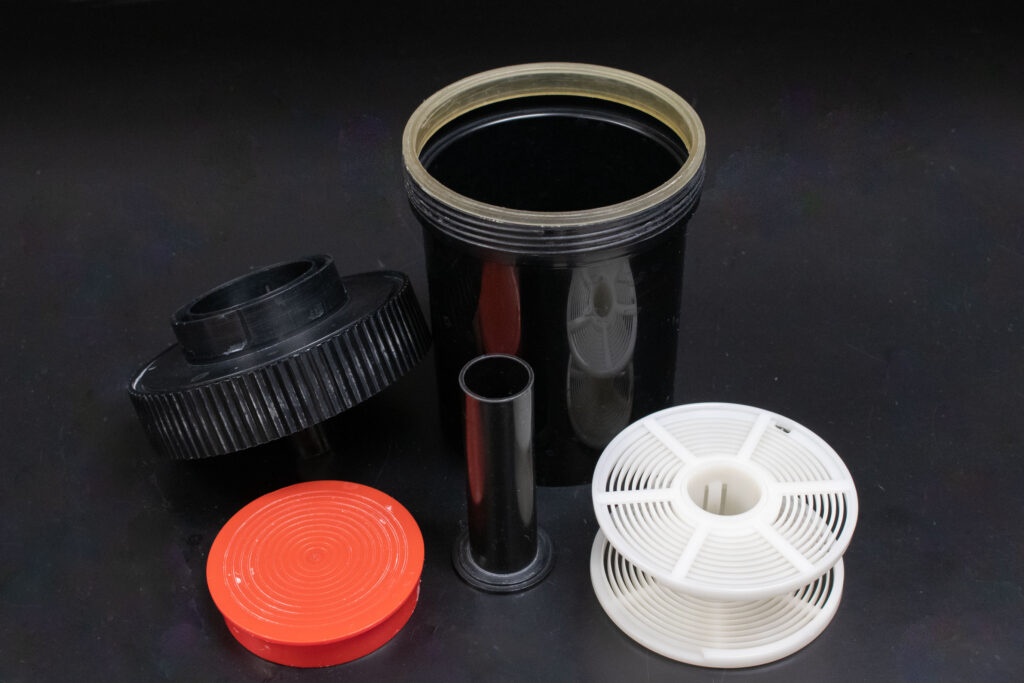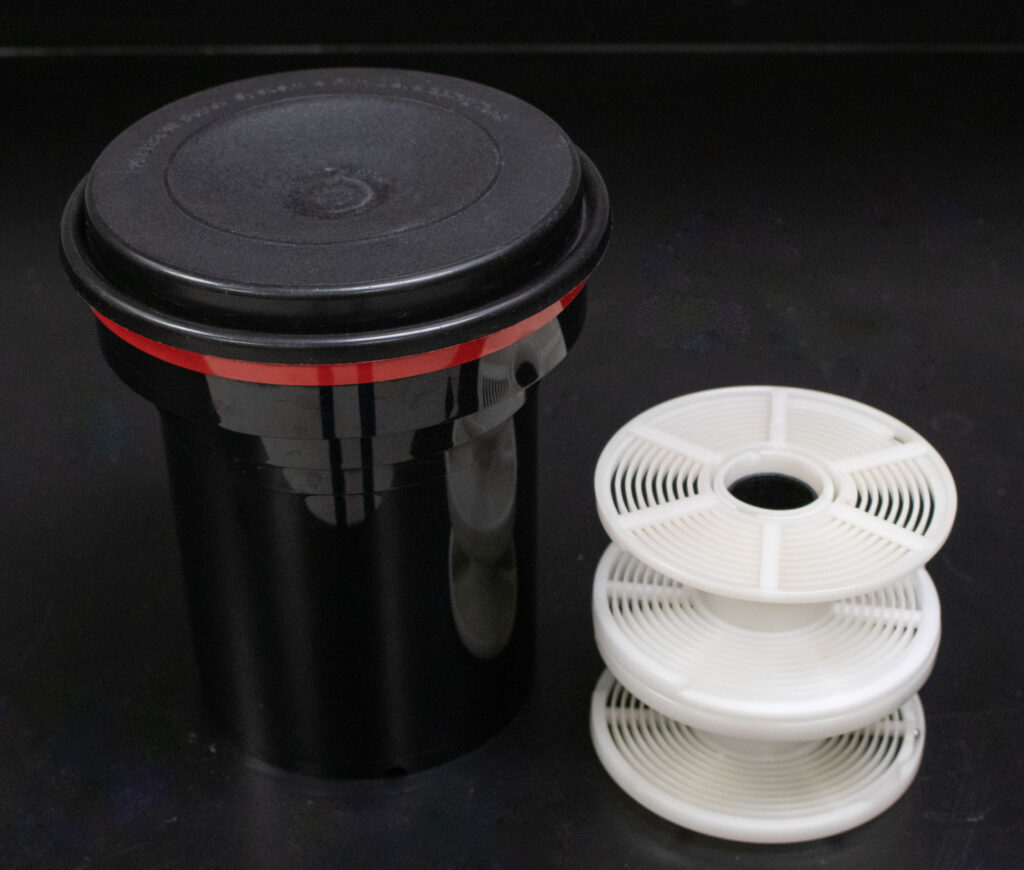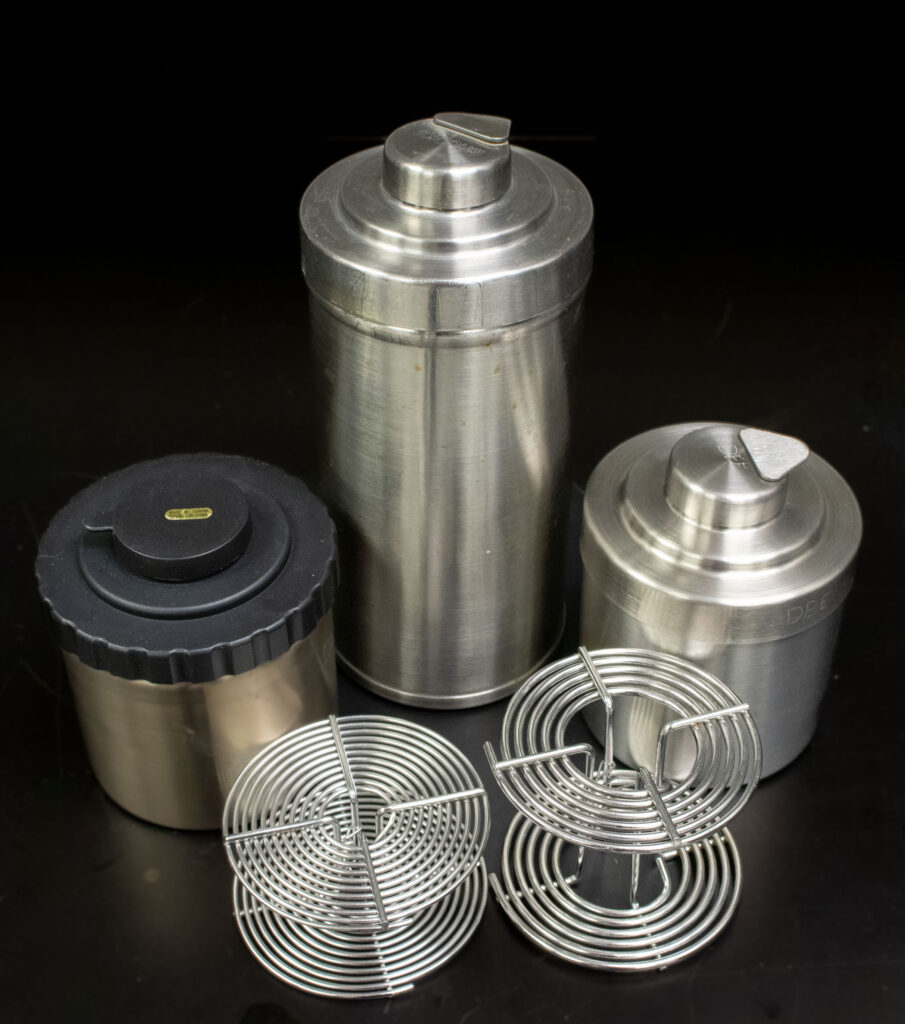Film Processing Tanks Comparison
I want to go over different kinds of film processing tanks for black and white and color film. Most of the film tanks are going to be the plastic tanks for film processing, but there are also stainless steel tanks. Generally speaking, the reels for the plastic tanks tend to be a little easier to load and the stainless steel takes a little bit more effort for 35 millimeter and 120. I prefer the stainless steel tanks myself because it seems to let the chemistry flow more around the film and get more even development, but they do have their drawbacks as well.
 The first is a standard tank that I’ve used since college and currently use it with my classes. It is a standard early Patterson-style tank that has the top with a built-in funnel to pour the chemistry in and out. It has a center post that’s removable that is for the light baffle. The film reels are placed on it, This tank will hold two rolls of 35 millimeter and or one roll of 120 Between the tank top and lid is a rubber seal to help keep from leaking chemistry when you’re doing your agitation.
The first is a standard tank that I’ve used since college and currently use it with my classes. It is a standard early Patterson-style tank that has the top with a built-in funnel to pour the chemistry in and out. It has a center post that’s removable that is for the light baffle. The film reels are placed on it, This tank will hold two rolls of 35 millimeter and or one roll of 120 Between the tank top and lid is a rubber seal to help keep from leaking chemistry when you’re doing your agitation.
Again, the post is really critical for the light baffle. Be sure to push the reels all the way down the post so the reels will be properly covered by the chemistry. Each roll of 35mm needs a minimum of 10 oz of chemistry, 120-220 needs 20 oz to cover the reels. Larger tanks can hold more reels.
 Another variation is a Patterson tank with a little bit different construction. It has a large rubber lid on top and a large funnel underneath that click locks into place. It uses the same reels and post as the other tank. my only complaint with this tank is that I’m always afraid that the funnel part is going to come out when I turn it upside down for pouring out chemistry, so I tend to hold on to it while I’m pouring out chemistry. The rubber lid does a good job of making sure chemistry doesn’t leak during agitation.
Another variation is a Patterson tank with a little bit different construction. It has a large rubber lid on top and a large funnel underneath that click locks into place. It uses the same reels and post as the other tank. my only complaint with this tank is that I’m always afraid that the funnel part is going to come out when I turn it upside down for pouring out chemistry, so I tend to hold on to it while I’m pouring out chemistry. The rubber lid does a good job of making sure chemistry doesn’t leak during agitation.
 The stainless steel tanks are kind of similar in construction with the tank body and a lid. Some lids are all metal, some are plastic. inside the lid is a light type baffle and no post. Different size tanks can hold from two of the stainless steel 35 millimeter reels or one of the 120. Larger tanks are available to hold more reels.
The stainless steel tanks are kind of similar in construction with the tank body and a lid. Some lids are all metal, some are plastic. inside the lid is a light type baffle and no post. Different size tanks can hold from two of the stainless steel 35 millimeter reels or one of the 120. Larger tanks are available to hold more reels.
I prefer the stainless steel ones because the chemistry flows more evenly around the film reels. The only bad thing is that the metal tops tend to leak because there isn’t a good seal. I’ve used large rubber bands to stretch around the seal to help keep it from leaking. What works really better is some electrical tape. Once it is loaded use the electrical tape around the lid to keep the chemistry in.
You may find older tanks out there that will support processing older formats of film like 127 (46mm) and 116-616 (70mm). These tanks will work well too. They are not made for inversion agitation, but have a post for spinning around the reels in the tank. You’ll have to experiment with your agitation. For more information you can go to my Youtube channel on working with film.